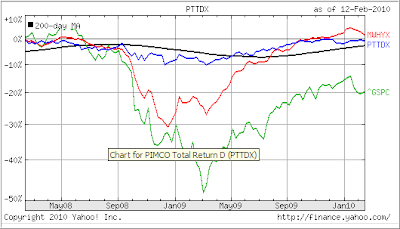 The NYT featured an interesting article titled “What To Look For In An Online Broker,” which features a comparison of the major players in the business:
The NYT featured an interesting article titled “What To Look For In An Online Broker,” which features a comparison of the major players in the business:
Charles Schwab fired the first shot when it cut its trading commissions last month, and now Fidelity and E*Trade have followed with price cuts of their own.
All of the changes may have made you think about switching brokers. Or, maybe you’re wondering if this should be a factor as you shop for a new brokerage account.
First, a quick review: Schwab cut its trading commissions to a flat fee of $8.95 in January. A few weeks later, Fidelity lowered its trading fees to $7.95. And last Friday, E*Trade said it would drop its fee to $9.99 or less per trade. None of them has cut prices below the $7 per trade charged by Scottrade, which remains the cheapest among the largest online brokers.
…
Why now? One reason the brokers cut commissions was to simplify their pricing and charge flat fees. Before the changes, Schwab, Fidelity and E*Trade all charged additional fees (about 1.5 cents per share) on top of their base commissions for people who traded more than, say, 1,000 or 2,000 shares, said Matt Snowling, an analyst who covers the online brokerage industry at FBR Capital Markets.
And as stock prices plummeted in late 2008 and early 2009, the size of the average trade in many widely held stocks increased. So it wasn’t unusual for investors to trade thousands of shares (think Citigroup at $3) — and that could add another $50 or so on top of the base commission. “The fact that none of the moves set a new price point below Scottrade is telling that we are not entering a true price war,” he added.
…
All of this is good news for the average investor. Lower trading commissions are always welcome, though these changes won’t really affect you if you don’t trade that often — and most long-term investors don’t (nor should they).
…
When you’re shopping for a broker, you need to consider the tools, services and funds they offer — that’s what really differentiates providers these days. For instance, while most brokers offer hundreds if not thousands of mutual funds, many will charge a “transaction fee” that can run up to $50 or more to invest in funds that aren’t on their “preferred” lists. So when you’re shopping around, make sure you won’t have to pay one of these fees to invest in your favorite funds. If you’re a fan of Vanguard index funds, for instance, you probably don’t want to invest in them through Schwab, which charges nearly$50 every time you make a deposit.
A 2009 study by J.D. Power and Associates asked more than 5,000 self-directed investors about their satisfaction with the major online brokerage players, and they ranked Charles Schwab at the top of the list. Vanguard came in second, followed by Scotttrade. Schwab’s customers were happy with its tools, account information, educational offerings, and interactions with its Web site. Vanguard, meanwhile, got high grades for its account offerings and phone-based interactions. And Scottrade received good marks for its trading charges and fees, as well as interactions through its branch offices.
…
The study also found that investors who used the tools and resources offered by their brokers were more satisfied than those who did not. That shows that price isn’t always the most important factor. Nor should it be.
If you are in the hunt of finding/evaluating a new online broker, I suggest you read the above link in its entirety.
Price wise there is not much difference so tools and resources may come into play for some. For example, if you are following the trend tracking method of investing, take a look and see if someone offers a simple but effective way to track your sell stops.
Or, if your work schedule has you on the road quite a bit, inquire about the possibility of using your cell phone as a trading tool, should you have the need to enter sell stop orders.
I agree that the decision of which broker you select should not be all about price, but mainly how you work and invest and who gives you the tools to best implement your investment strategy.






